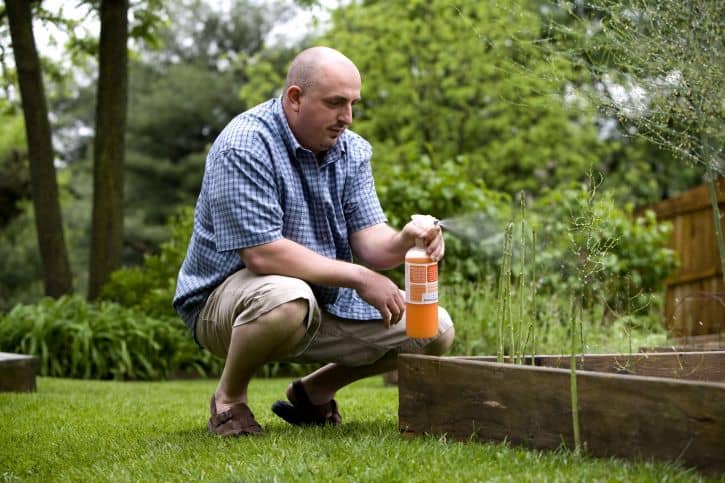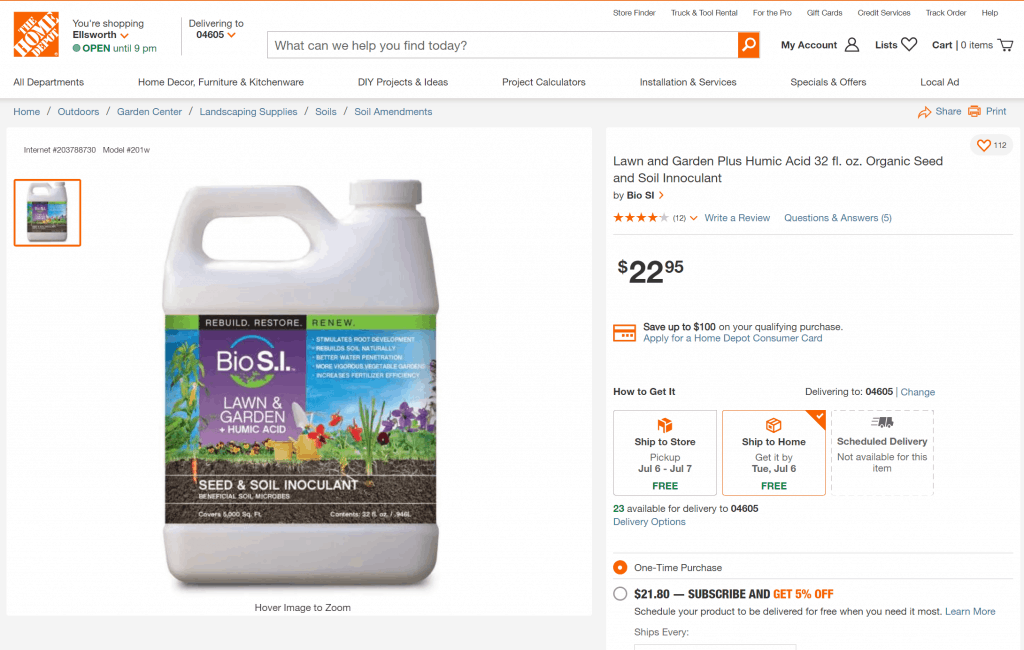You might have heard many gardeners, hobbyist YouTubers, and even your local hardware store owner recommend adding humic acid to your lawn. It is widely available in both granular and liquid forms and recommended for the colder season and when frost is about to hit.
The thing about humic acid is that it can also be used late in the season, and you can still enjoy good growth of your grass throughout the season – that’s of course if temperatures don’t drop way below zero. A common question people ask is does my lawn need humic acid? What is humic acid in the first place, and how much is too much?
Humic acid is considered useful for lawns as it helps ‘unlock’ the nutrients in the soil as it starts to freeze out and become unavailable. It helps change the soil structure of your lawn by encouraging nutrients to stay in the soil. For example, if you have sandy soil, clay, or other heavy soil. There are numerous other benefits it offers as well, which we shall discuss below.
Does My Lawn Need Humic Acid – The Details
As mentioned above, there are numerous benefits that humic acid boasts. However, before we get into them, let us understand what humic acid is.
What Is Humic Acid?
You can think of humic acids as the remnants of ancient plants that decomposed naturally into the soil and became complex molecules with time. It exists all across the globe naturally in;
- The soil itself
- Peat
- Ocean
- Freshwater
- Sedimentation layers and more.
These molecules get compressed as more layers of earth settle on top. However, over time, they get exhumed to near-surface location the molecules are extracted and created into the form we see.
Each humic acid granule usually represents about 80% of the TOC (dissolved organic material). It is a weak acid which, in the long run, helps maintain the soil pH balance as well. The acid can be drawn from a variety of sources, but the richest deposits (which are equally expensive) come from ancient deposits formed in places where animals, plants, and even humans died in wetlands.
Now, as organic matter gets compressed, it turns into coal, right? Well, that explains the color of humic acid. As mentioned above, humic acid gets exhumed with time right before it converts into coal. This means that it becomes softer and malleable.
When Should I Put Humic Acid On My Lawn?
Whether you use granulated humic acid or liquid is entirely up to you.
There is a controversy surrounding humic acid because of its origins. Many suggest that it isn’t a good fertilizer for use in lawns, because it doesn’t work. However, if you ask anyone who has used humic acid, such as ourselves, we can tell you that it works. The only issue is (which keeps on breathing fire into the controversy) is that there weren’t many studies suggesting whether humic acid is useful or not until 2018.
In March 2018, a group of researchers studied the nutrient uptake, essential oil, and chemical composition of garden thyme before and after humic acid was added under greenhouse conditions. The study revealed that the increase in humic acid levels leads to enhanced essential oil content, which, in turn, improved the soil composition and the chemical composition of garden thyme as well. This happened as humic acid affected secondary metabolites and nutrient uptakes of the plant, suggesting that humic acid can be a viable addition to the soil to enhance biological activity.
This meant that the controversies died out a little – but not completely. For the acid to be accepted completely, there is a lot more research still to be done. However, as far as personal experience and homeowners are concerned, humic acid can be a viable addition to your lawn.
It doesn’t exactly benefit the plant or biomes itself. The substance just unlocks nutrients in the soil while increasing its ability to store those nutrients and your plant’s ability to absorb more and resulting in better growth.
The best time to put humic acid in your lawn is either when you are planting or transplanting a plant, or if you’re adding it to existing plants, at the start of spring or fall. We recommend applying the acid early morning before you water your lawn. If you are using granular humic acid, remember to water your lawn generously to ensure the granules dissolve and therefore release their nutrients.
Granulated humic acid is much more expensive, but is also equally concentrated. For every cup of granules, you should add a bucket of water and spray it across your lawn.
Can You Put Too Much Humic Acid On Lawn?
When you are putting humic acid for the first time, it is a good idea to add 1 cup of granules to a bucket and then spray it over 100 square feet. You can also go for 12 ounces of humic acid in a bucket and spray it over a 1,000 square foot area. The thing about humic acid is that you can’t exactly overdose your plants with humic acid, but you don’t want to waste the product either, considering how expensive it is.
Humic acid will cost you $600 (98%) per ton or $25 per pound (90%).
After you have applied the humic acid, water your lawn thoroughly to ensure the acid has seeped into your soil and reach the roots. The first coat should be applied at the start of fall or spring, but you don’t have to be specific about it – hence the versatility of humic acid.
How Often Should You Apply Humic Acid?

You should consider applying the humic acid 3 weeks after the initial application but this time, we recommend mixing 1 ounce of product into a bucket of water. You will find that the mix resembles black coffee again. Mix it well and then spray it every 100 square feet. For 1,000 square feet, we recommend mixing 6 ounces into your buckets and spraying it over. Again, water generously to ensure the product reaches the roots.
Two applications are more than enough humic acid for your lawn to last the season. The next year, apply humic acid once as the season begins ONLY. The next year, however, you can apply it twice again. However, we would like to mention that if you apply it twice every year, you won’t risk burning, ‘singing’, or otherwise ruining your grass, provided you are mowing it regularly.
This is to say that while there is no such thing as over-application of humic acid, applying it twice every year can lead to wasted humic acid. A pound of humic acid can easily last you anywhere from 2 to 5 years, depending on the size of your lawn.
There is no such thing as needing humic acid since its use is purely optional, primed to help you improve your lawn’s overall outlook during spring, summer, fall, and winter. One more thing we should mention; humic acid isn’t just for grass but for other plants as well. After you have sprayed your garden with humic acid, it is best to keep your pets on a leash for the day since not only is humic acid bitter, it can also lead to food poisoning if ingested by pets.

